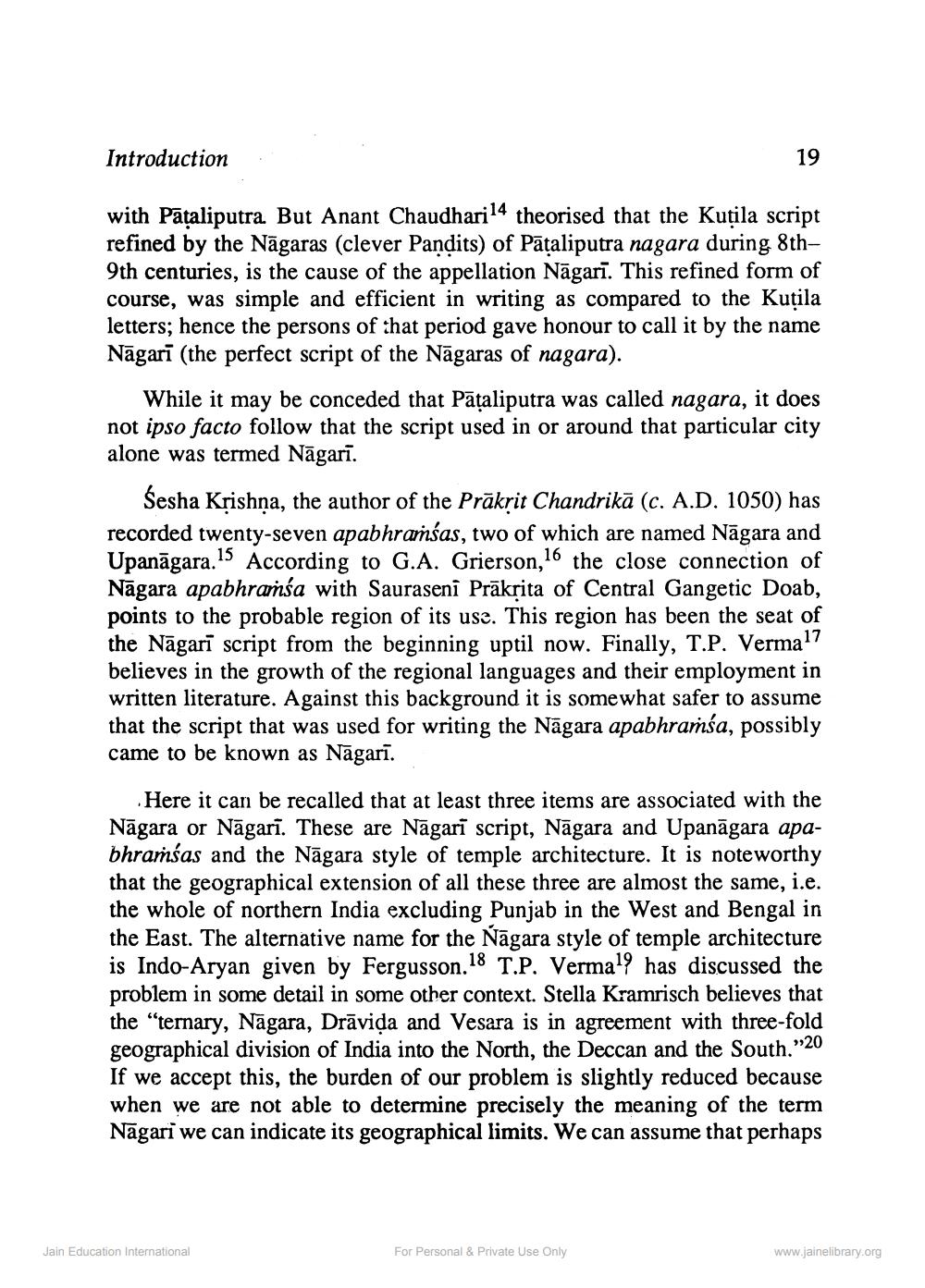________________
Introduction
19
with Patliputra But Anant Chaudhari 14 theorised that the Kuțila script refined by the Nāgaras (clever Pandits) of Pātaliputra nagara during 8th9th centuries, is the cause of the appellation Nāgarī. This refined form of course, was simple and efficient in writing as compared to the Kutila letters; hence the persons of that period gave honour to call it by the name Nāgari (the perfect script of the Nāgaras of nagara).
While it may be conceded that Pāțaliputra was called nagara, it does not ipso facto follow that the script used in or around that particular city alone was termed Nāgarī.
Śesha Krishņa, the author of the Prākrit Chandrikā (c. A.D. 1050) has recorded twenty-seven apabhraías, two of which are named Nāgara and Upanāgara.15 According to G.A. Grierson, 16 the close connection of Nāgara apabhramsa with Sauraseni Prākrita of Central Gangetic Doab, points to the probable region of its use. This region has been the seat of the Nāgarī script from the beginning uptil now. Finally, T.P. Vermal? believes in the growth of the regional languages and their employment in written literature. Against this background it is somewhat safer to assume that the script that was used for writing the Nāgara apabhraíśa, possibly came to be known as Nāgarī.
Here it can be recalled that at least three items are associated with the Nāgara or Nāgarī. These are Nagari script, Nāgara and Upanāgara apabhramsas and the Nāgara style of temple architecture. It is noteworthy that the geographical extension of all these three are almost the same, i.e. the whole of northern India excluding Punjab in the West and Bengal in the East. The alternative name for the Nāgara style of temple architecture is Indo-Aryan given by Fergusson.18 T.P. Verma has discussed the problem in some detail in some other context. Stella Kramrisch believes that the "ternary, Nāgara, Drāvida and Vesara is in agreement with three-fold geographical division of India into the North, the Deccan and the South."20 If we accept this, the burden of our problem is slightly reduced because when we are not able to determine precisely the meaning of the term Nāgari we can indicate its geographical limits. We can assume that perhaps
Jain Education International
For Personal & Private Use Only
www.jainelibrary.org




